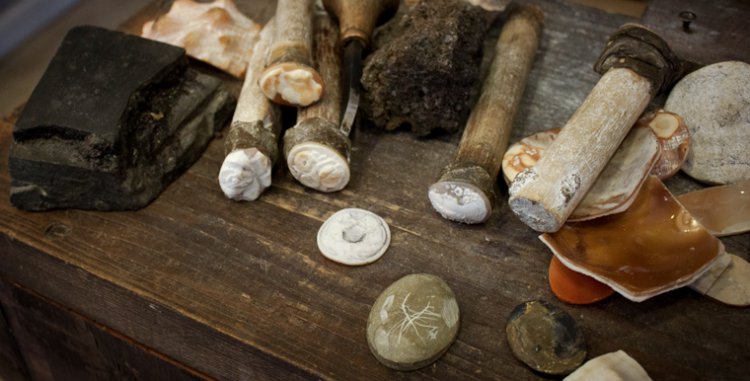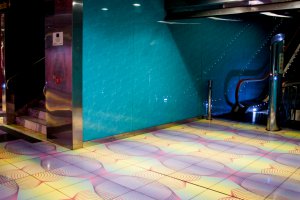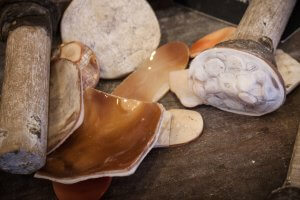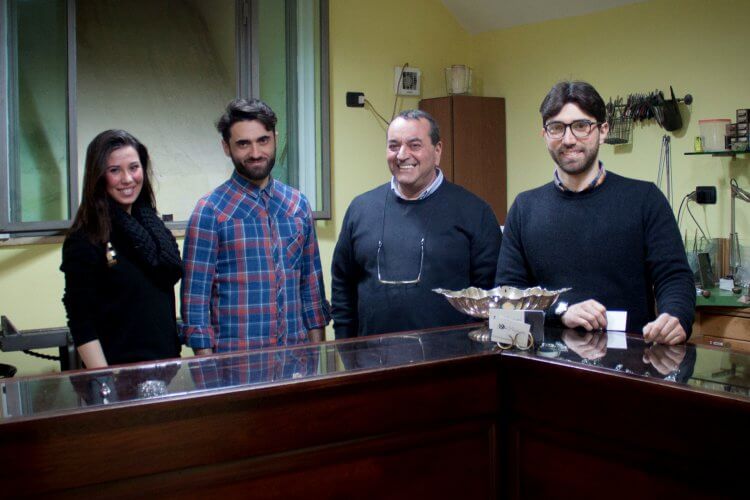A vist to Naples – part 2
 Array
Array
I know that it has been a long time since the first part of the article about the visit to the bustling city of Naples. Due to the workload, I had to have a break from writing the blog for some time. I hope you have not forgotten about this website and you will be enthusiastic about the news that I am coming back to publishing. There will also be some changes that I will tell you about in the introduction to each new post :). Despite the lack of time to write for the last year – I still managed to collect some interesting materials. So I think that I will be able to surprise you in the next posts.
What’s this time?
As for the jewelry itself, in this part I would like to tell you about the Il Piccolo Museo del Cammeo (Small Museum of the Cameo), located in the heart of Naples and introduce you to local artists, including the studio Preziosità officina orafa. I will also reveal one of the main reasons for my trip to Naples and I will also take you to the modern educational center Città della Scienza (City of Science).
Before I start describing the places which I had a chance to visit, I will try to remind you of the charm of the very city of Naples itself. In the first part I focused on Naples history, this time I would like to add to that description some of my personal observations.
First of all – the volcano. Being in a city located at the foot of a big hill, which is not just a piece of rock, but a ticking time bomb, evokes a thrill every time you look at the potential threat. Although most people, me amongst them, have probably got used to seeing this giant in a classic shot from Italian postcards – from the center of Naples it looks like quite different and it is even more interesting.
The view of Italian blocks in the blazing sunlight with Vesuvius in the background is something that made a strong impression on me. One could feel like in a strange dream in which life runs with its rhythm, at the foot of danger lurking in the darkness. Maybe this is one of the reasons Italians can enjoy life so much?
Personally, I enjoyed the local flora and fauna very much. I greeted enthusiastically every tree with oranges, palm trees, cacti and lizards that can be found in Naples as often as spiders in Poland. My enthusiasm was not particularly understood by the residents who were already accustomed to these views and did not understand the uniqueness of the phenomenon itself.
You may be surprised by the information that many of the beaches in Naples are private. What is more, due to the closeness of the vulcano, the sand is gray-black. Unfortunately, I could not get down to the water. Part of the city that I visited was tightly built-in and fenced, and in places the buildings almost entered the sea.
Metro
If Italy for you is associated mainly with ancient art, you will be surprised by Naples metro stations, in particular a station called Universita. Crazy colors, three-dimensional, changing paintings on the walls, modern sculptures and lighting is just the beginning of what awaits you in the underground of this station.
- Universita
- Universita
Il Piccolo Museo del Cammeo
The small Camei museum is a place that is definitely worth visiting during your visit to Naples. The museum is located above a jewelry store with shells and coral and from what I found out is a private initiative. This does not mean, however, that it is difficult to find – as I already mentioned in the previous part of Consorzio Antico Borgo Orefici, you will be directed there by small exhibitions and leaflets in other museums. I came across such a mini advertising stand of Il Piccolo Museo del Cammeo, among others, in the Napoli Sotterranea, which by the way is also worth visiting.
- Exhibition in the museum
- Cammeo
- Jewelry with carved shells
- Cammeo
The small Camei museum will show us how these carved ornaments are made step by step. We will find there a recipe for a special sealing wax, which is used to glue the shell to a piece of wood, which is to facilitate the proper movement of the shell during sculpting. On the ground floor, in the central point of the store, there is a stand where the master works. There are days when you can watch live how shells are created, but unfortunately I wasn’t lucky to be there on such a day. If you are interested in what it looks like in practice, the museum has its own page on facebook, where the footages from the creative process are published.
- Knowhow
- Work i nprogress
Local artists
In Il Piccolo Museo del Cammeo, as in other such places, we were sent away a few streets away, where in a tiny, very charming space, a handicraft fair was held. Among them were the works of Grazia Casillo, which contained carved shells from the museum.
- Ceramics
- Grazia and Me
The next location visited was the Preziosità officina orafa studio. We were welcomed there by the multi-generational crew. They talked a bit about their hand-made patterns, they showed us around the studio, on the front of which stood a huge, antique safe. You can believe me that there was plenty to feast your eyes on.
- Jewelry with a shell
- Silver rings
- Old safe
- A richly decorated silver bracelet
Open BioMedical Initiative
And finally a small explanation. I went to Naples to take part in the reopening of Città della Scienza, which had burned down several years earlier. It is a very modern educational institution, which could be compared to the Polish Copernicus Science Center in Warsaw. I was invited there because one of the objects presented at the opening was designed by me (in cooperation with the organization Open BioMedical Initiative) – a prosthetic hand – Tina.
This project would not be possible, if not for the substantive support of Cristian Currò and Valentino Megale, and trial prints, which for a change were made by the Polish company Reddog Systems and greatly helped me with matching of individual elements.
Tina is an open-source project – which means that it can be improved and developed on its own. The files are publicly available for a download on the OBM forum.
- City of Sciences
- City of Sciences
- City of Sciences
- City of Sciences
And that would be all. I hope that my description of the trip to Naples was as inspiring to you as much as it was to me. This trip is a study of how local entrepreneurs and residents can achieve common goals without destroying each other but through cooperation and support of themselves. See Naples and die is used in English for a reason as it is a magical city. Going from one place to another, not with the help of a guide and mutual sympathy is somehow beautiful and unique experience.
































Tell us, what do you think about it